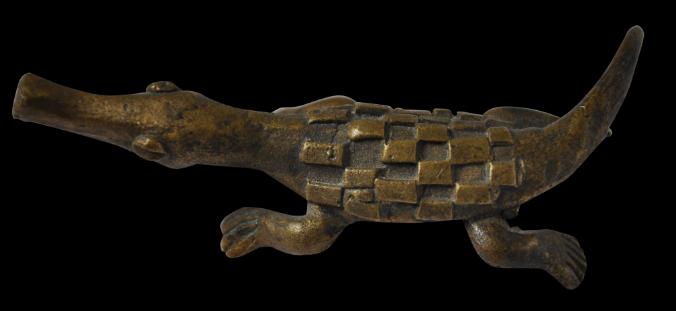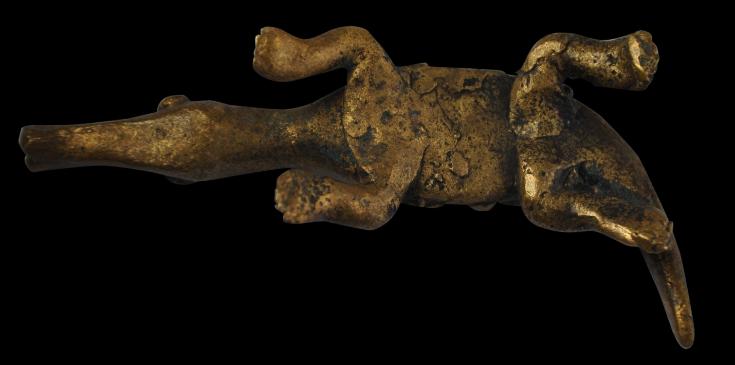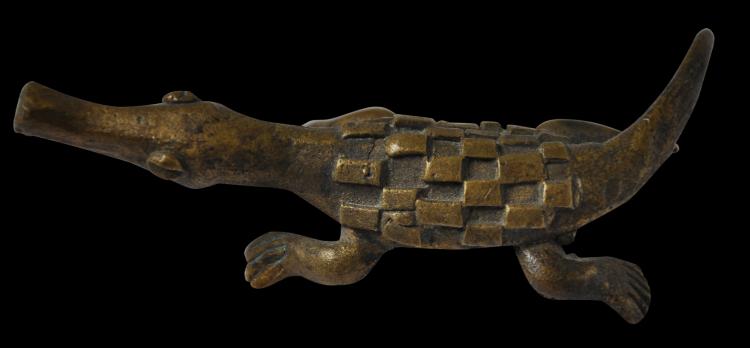
Ashanti Pangolin Gold Weight
Finely-Cast Brass Gold Weight Shaped as a Pangolin
Ashanti People, Ghana
19th century
length: 7cm, weight: 45g
This appealing cast brass gold dust weight depicts a pangolin, its scales clearly evident on its back. It has a long snout, a long tail, and somewhat unaware eyes. Pangolins are rarely encountered as subjects for Ashanti gold weights. Phillips (2010, p. 146-47) illustrates two more abstract examples attributed to the 18th and 19th centuries respectively.
Personal weights such as these were used in Ghana and elsewhere in West Africa. Principally, small weights were used to weigh gold dust which became the currency used to settle everyday transactions. Each party to any transaction would typically use their own weights – largely because one could trust one’s own weights in the absence of any government certified weighing system. The negotiating process not only would include the cost in gold dust of the items being transacted over but a comparison of weights, debate over the scales used, and the purity of the gold dust (gold often was adulterated with brass filings). Even transactions as rudimentary as buying vegetables in a street market necessitated this process.
Gold weights were cast in brass or bronze. They were used by the Akan who occupy a large part of West Africa including parts of Ghana and the Ivory Coast and include many sub-ethnic groups such as the Baule and the Asante (Ashanti). Gold became an important commodity which gave rise to Ghana’s old colonial name of the Gold Coast. The region was known as the Gulf of Guinea, and in England, a gold coin worth twenty-one shillings became known as a guinea (Philiips, 2010).
The gold weight here is in excellent condition. Its back with its chequerboard scales is particularly striking.
References
Phillips, T., African Goldweights: Miniature Sculptures from Ghana 1400-1900, Edition Hansjorg Mayer, 2010.
Robbins, W.M. & N.I. Nooter,
African Art in American Collections, Smithsonian Institution Press, 1989.Provenance:
UK art market
Inventory no.: 3370
SOLD





